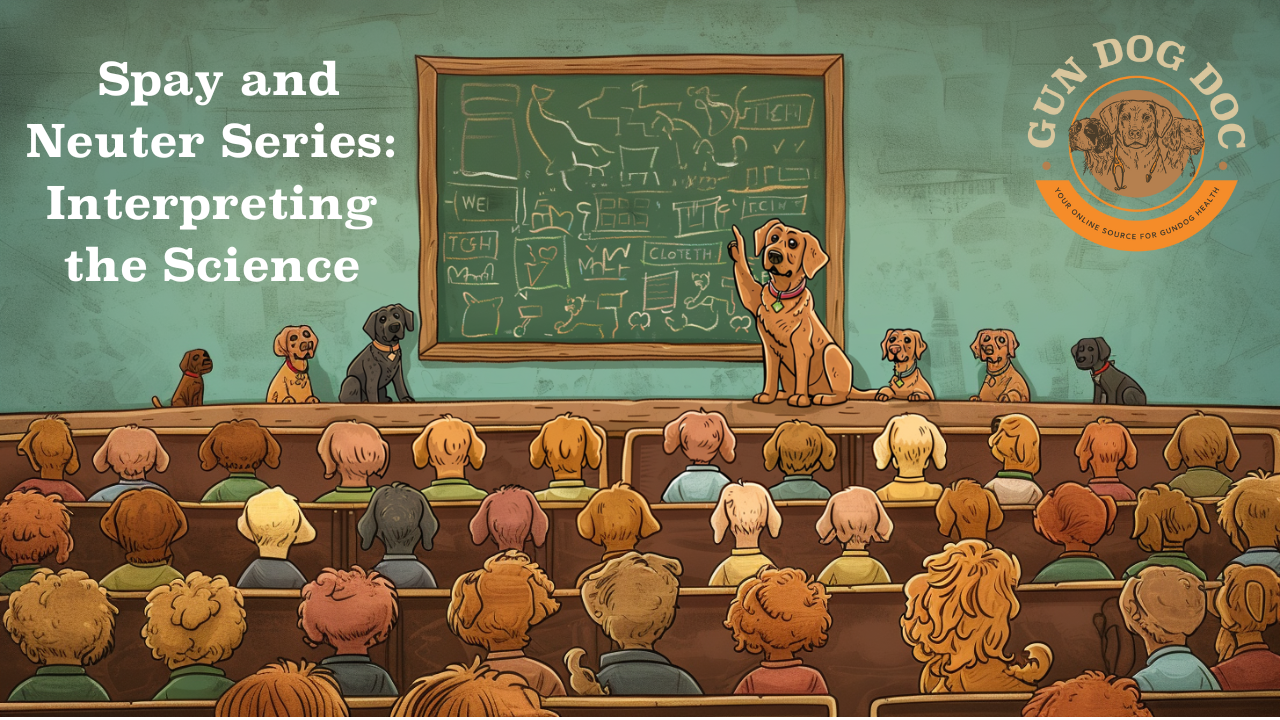In the last three blog posts, we’ve covered a lot of ground on the subject of spaying and neutering versus leaving a dog intact. We started by exploring the historic veterinary recommendations, moved on to discuss the newer breed-specific guidelines from the University of California Davis, and then examined the effects on lifespan and behavior.
This week, we’ll delve into what the research actually means for you and where we stand in the profession today.
Why Such a Discrepancy?
First, it’s important to understand why discrepancies still exist. Medicine often progresses in a cycle: a treatment seems logical, it’s used for a long time, then someone steps back and questions its efficacy, prompting studies. History is filled with examples of accepted treatments that now seem absurd, from bloodletting to lobotomies.
Even within my career, I’ve seen significant shifts in standard care. When I was a veterinary student, dogs with suspected back issues were rushed into surgery. For dogs that couldn’t afford surgery they were given IV doses of very potent steroids. Today, only a fraction of these cases proceed to surgery, and the use of any steroids for these dogs has declined—though some of us “old guys” occasionally still use them.
Beyond Health Implications
The debate over spaying and neutering isn’t solely about health outcomes; societal pressures and perceptions also play a significant role. It’s both amusing and disheartening to see the outrage new guidelines inspire on veterinary forums, with many expressing disbelief that the general pet-owning population can be trusted with unaltered pets.
Maybe it’s because my entire career has revolved around hunting dogs, that I’ve never felt I was the judge and jury in this decision. In general practice, for years, I have advocated for large breed dogs of all breeds and mixes to reach skeletal maturity before neutering, sometimes writing letters to humane societies or rescues to that effect so that owners could do what was best for the dog rather than what their adoption agreement dictated.
Presenting Optimal Health Options
I believe in presenting optimal health options first and then guiding clients to help make the best decision for their pet and situation. For most, this will eventually mean spaying or neutering. Conflicting information, like studies on longevity, actually makes my job easier rather than muddying the water. It means both sides of the decision have merit, allowing us to find what works best for each individual within these parameters.
For too long, the profession has universally advocated early spay and neuter, using pet overpopulation, mammary tumors, and aggression as justifications. This stance became so ingrained that it led to the chastising of owners with intact animals, an unfortunate position for many in the profession.
Moving Forward
These studies don’t provide definitive answers but highlight that we can no longer treat owners who elect to keep their animals intact as pariahs. Enough science now exists to show that this decision is as reasonable, if not more so, than blanket spay/neuter recommendations.
If you’ve followed my blog, you know I advocate for individual discussions and decisions. This new information gives us the tools to have these discussions. If you plan on keeping your dog intact, great—here’s what to watch for. If you’re considering spaying or neutering, let’s discuss the best timing to avoid major health concerns.
It’s funny how open discussions can lead to everyone winning. Unfortunately, from politics to medicine, we often feel there’s only one right answer. Thankfully, that’s not the case. Now, we just need to get everyone on board with having these discussions.
In the final post of this series, I’ll share how I approach this decision with my own dogs and client dogs, including those breeds without detailed guidelines.



